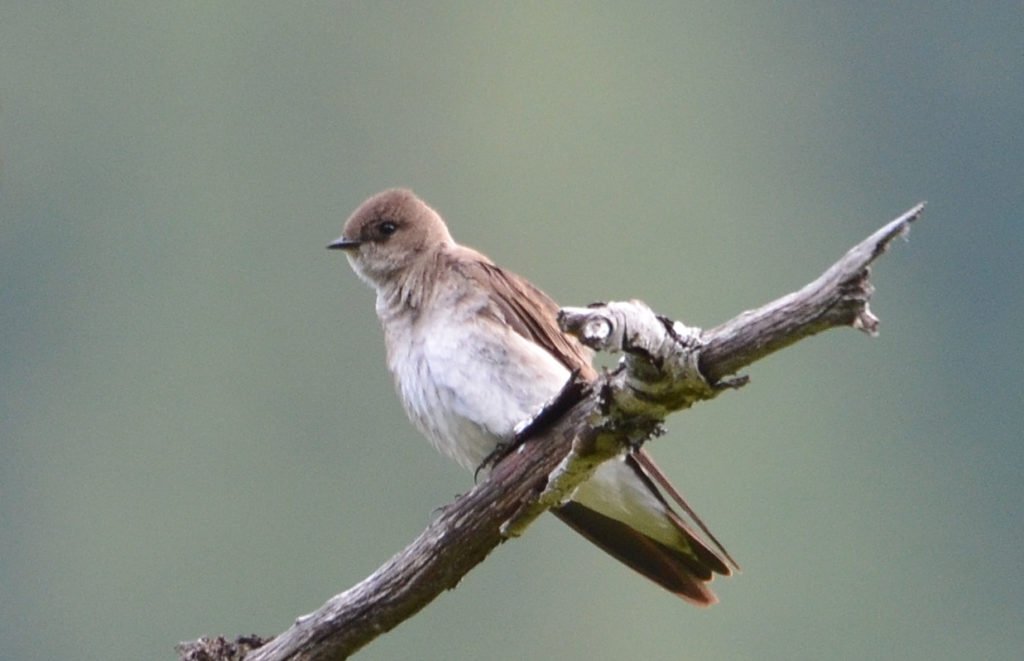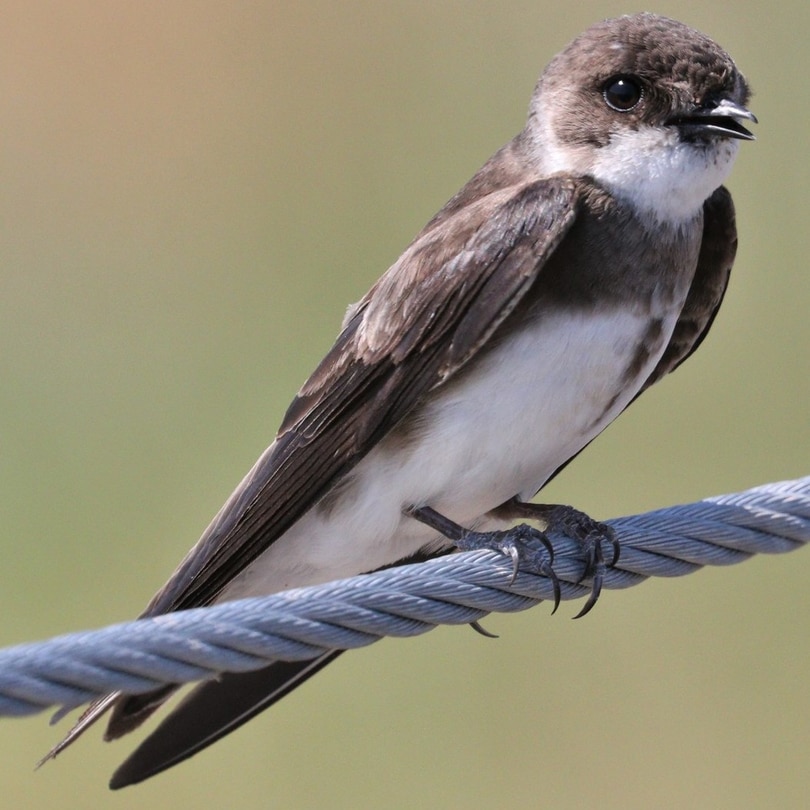An interesting bird name is “swallow.” In late Old English and Middle English it meant “gulf, abyss, hole in the earth, whirlpool,” also, in Middle English, “throat, gullet.” The name apparently stuck to the birds because of their dizzying, whirlpool-like flight, or their voracious eating habits. A
In Ancient Greece, swallows were associated with Aphrodite. In addition, they were bearers of good luck. They were associated with the gods, as well as the souls of the dead. The ancient Greeks allegedly believed gods could take new form as swallows, and harming one of those birds could bring bad fortune. Greeks also had some interesting ideas about their migration.
The Northern Rough-winged Swallow (Stelgidopteryx serripennis) is so-called because its primary feathers are edged with small hooks, a feature you can only detect by running a finger along the feather. The genus name means “scraper wing” and the species name “saw wing.” These structures, which would seem to increase turbulence probably serve to smooth airflow over the wings, if a research paper on swift wings applies, but I haven’t found any such studies of swallows.

The Northern Rough-winged Swallow is a small bird species found in the Americas, from southern Canada to South America. This swallow is one of the smaller swallow species, with a length of about 5 inches (13 cm) and a wingspan of approximately 10 inches (25 cm). It has a brownish-gray back and wings and a pale grayish-brown throat. Its underparts are light gray, and its tail is slightly forked.
These swallows feed almost exclusively on flying insects, intercepting them with a low, gliding flight over water or open ground, with a slower and smoother wingbeat than other swallows. Unlike other swallow species, the Northern Rough-winged Swallow constructs a cup nest in hillside burrows or crevices and culverts in human structures. They typically breed once or twice a year, with clutches of 4-5 eggs. Unlike the similar Bank Swallow that nests in colonies, the Northern Rough-winged Swallow nests solitarily.
In the fall, most populations migrate to Central and South America, though warm areas such as the Texas Gulf Coast and southern Florida host populations year round.
A subspecies of the Rough-winged Swallow is known as the Southern Rough-winged Swallow (Stelgidopteryx ruficollis serripennis),found in the southern part of the Rough-winged Swallow’s range, from Mexico to South America. The Southern Rough-winged Swallow is similar in appearance to the nominate subspecies, but it has a darker and more uniform gray-brown back and wings, and a more contrasting rufous collar on its neck. The Southern Rough-winged Swallow also has a slightly longer bill and a larger wing area than the nominate subspecies.

The similar Bank Swallows have a forked tail, unlike Northern Rough-winged Swallows which have square-tipped tail. Bank Swallows also glide with a more obvious bend in the wings than rough-winged. Compared to the Northern Rough-winged Swallow, the Bank Swallow has a crisp brown chest band and relatively dainty build.
Pingback: Three Tiny Parks Report (and native plant sales) – Sunday Birders